11.11 Big Sale for Cloud. Get unbeatable offers with up to 90% off on cloud servers and up to a $300 rebate for all products! Click here to learn more.
By Wen Lou.

As a fundamental piece of the visual world, images are an important means for us to obtain, express, and transmit visual data in the information age. Arguably, today the most efficient and accurate way to generate images is to generate, display, and draw images with computers. These technologies are collectively referred to as computer graphics. Computer graphics technology has become an important aspect in several different industries, including animation, film special effects, gaming, design, advertising, AR/VR, and data visualization. And, to better simulate human senses and improve the overall sensory experience, increasingly more industries are turning to 3D imaging.
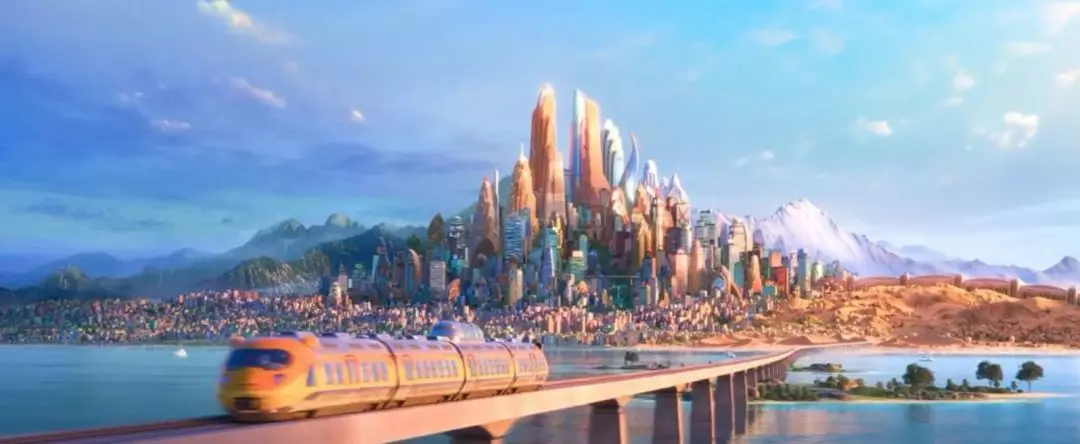
Image source: https://www.vmovier.com/48189
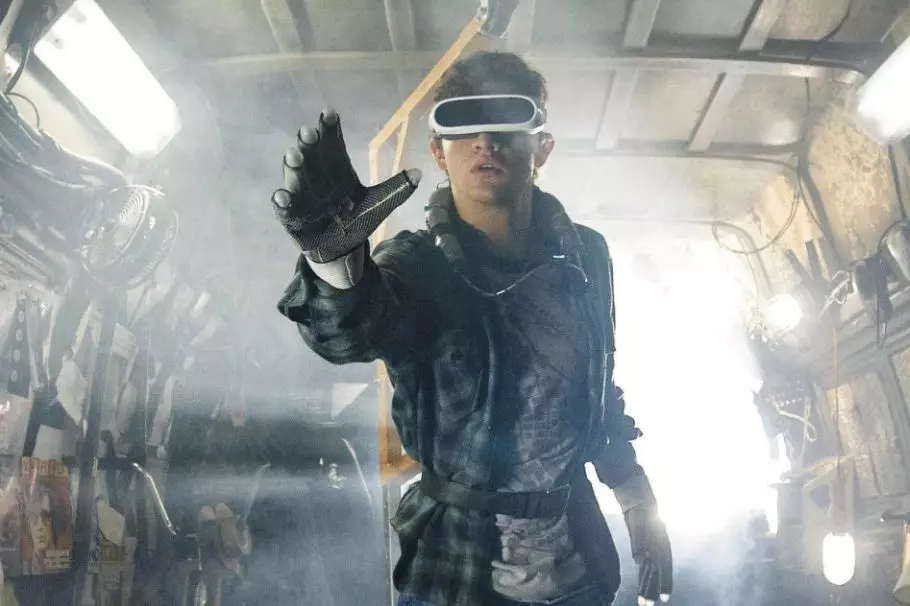
Image source: http://movie.xunlei.com/reviews/103994
In the past several years, computer graphics technology has been a key area of research all over the world, not just China. It is a sophisticated and fast-moving field of research, with both theoretical and practical, industry applications being explored intensively. Whereas other fields like gaming and film are relatively stable and mature areas, web-based computer graphics technology is constantly evolving, full of future potential.
So, what is Ant Financial and Alipay doing with computer graphics technology and 3D imaging?
Well, at Ant Financial, we have always attached great importance to the interactive experiences of our customers. Therefore, computer graphics technology, especially web-based computer graphics technology, is also a key area of research and development at Ant Financial. Initially, we only thought of computer graphics as a means to enrich our existing product lines, but later we reimagined what the value of computer graphics is. And in doing so, we have developed a complete set of new solutions, covering infrastructural capability building, tool platforms, workflows, and implementation scenarios.
In this article, I will share, as a member of the Ant Financial's research and development team, the problems that we encountered during our exploration into the above solutions and the ways we resolved these problems.
But before we get ahead of ourselves, let's also cover some basic concepts so that we're all on the same page.
In reality, the rendering of 3D images involves both offline rendering and real-time rendering.
Offline rendering is great for producing photo-realistic renders. However, its main disadvantage is that it may take hours or even days for a computer to render just one frame in more complex jobs. Offline rendering is often used in industry applications that require above all else-high image quality-like animated films and advertising illustrations.
Real-time rendering, on the other hand, is all about fast rending and time efficiency. In a human-machine interaction scenario, for example, rending must be quick so to allow for quick refresh rates and smooth animations so that the interactions between the user and the machine appear normal to the user. In such scenarios, a computer must be able to render images in a very short time, display it instantly, and continue on to prepare the next image. For these sorts of rending jobs, the computing capacity of CPUs alone is insufficient. Rather, they will use the parallel computing power of multiple GPUs. Real-time rendering is mainly used in human-machine interaction scenarios where images are displayed based on data in real time, in gaming, data visualization, and AR/VR applications.
In the Internet space, most scenarios in real life require real-time rendering. Today, although real-time rendering may compromise on image quality, we believe that the development of various technologies will boost the quality of real-time renders, making them appear more photo-realistic. In the future, what used to be achieved only through offline rendering will also be feasible through real-time rendering. Future AR/VR applications will definitely wow us.
To render 3D images efficiently, controlling both the hardware and graphic drawing interfaces are musts. To give browsers the same ability, the WebGL Working Group published WebGL specifications in 2011, which was then quickly implemented in various browsers. With WebGL, you can create dazzling 3D effects on web browsers. And, by using the cross-terminal and cross-client features of web browsers, you can obtain 3D content at low costs and load them on demand without downloading any 3D-application clients. WebGL also can be integrated with product content in super apps such as our own Alipay at a low cost to get the most out of their mobile traffic.
The combination of several dynamic web features and 3D rendering has made for dramatic changes and interesting applications:
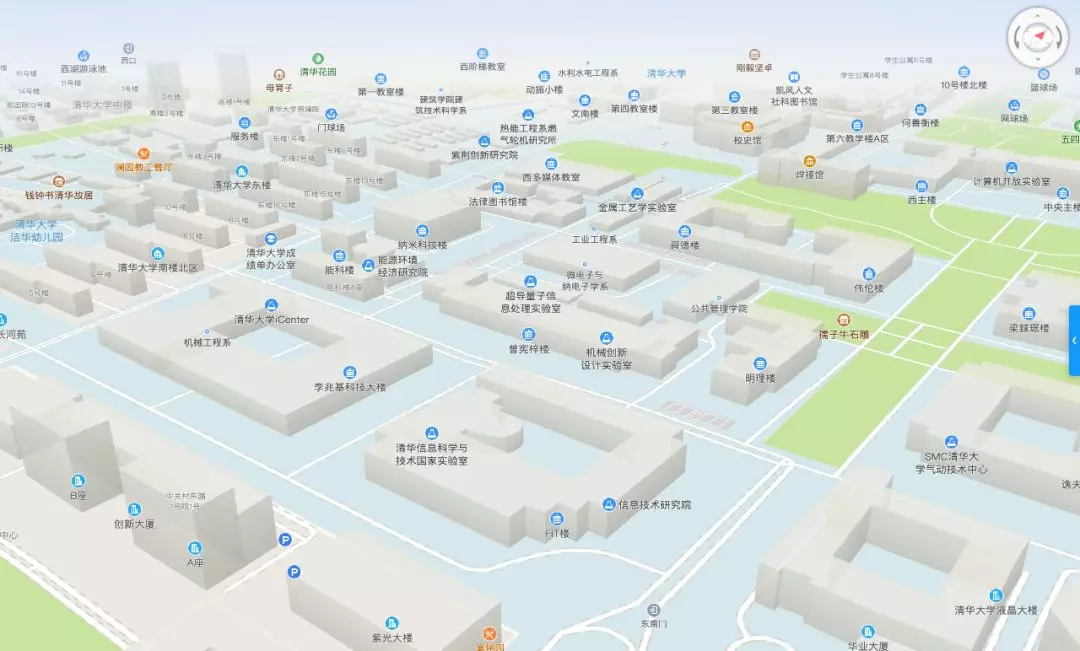
A 3D map on Amap, Alibaba's mobile map app.
There are, of course, many other web-based 3D application scenarios, although they aren't listed here.
While some scenarios may not seem complex, but implementing them directly with WebGL isn't exactly easy. The catch is that WebGL only provides the most basic of graphic drawing APIs. And it also requires that you understand the internal details of WebGL and that you learn how to complete GPU programming using the WebGL shader language and have a good grasp of some complex mathematics to solve spatial relation and light-shadow effect calculation problems.
Therefore, at Ant Financial, it's been our goal to package WebGL into a developer-friendly engine, which provides many common APIs and simplifies the overall construction process of the entire 3D project.
So, the below sections outline what we've been up to, providing a bit of a background story on how Oasis 3D came into being.
Oasis 3D is a lightweight 3D engine that we developed at Ant Financial. It provides a rich set of functional components and supports complex 3D graphics rendering. With Oasis 3D, developers can easily create complex 3D environments without needing to have a background in complex graphics, making it much easier to create 3D environments.
Oasis 3D boasts the following features:
1. Microkernel architecture. The Oasis 3D kernel provides some basic rendering capabilities among many other things. You can extend Oasis 3D capabilities to build different engines for different scenarios, such as for the game engine, animation engine, data visualization rendering engine, and 3D rendering engine for AR environments. Drawing on UNIX's ideas, Oasis 3D follows the philosophy of "do one thing, and do it well" in its design of every module. By integrating a complex and cohesive set of functions and exposing only user-friendly interfaces, Oasis 3D makes for a powerful and complex application whose capabilities do not negatively affect the maintainability of its overall functionality. Currently, Oasis 3D is mainly used in some interactive games and big screens at the Ant Financial. To support these scenarios, Oasis 3D packages common graphic functional modules, which provide the necessary support for our daily application development:
2. Component-based development. Both component-based development (CBD) and the traditional object-oriented programming (OOP) can be used to extend the functionality of a class, but, at their core, they exhibit very different concept designs. In the traditional OOP, when a functionality extension is required, a base class is designed to create derived classes that inherit from the base class. While this method is very intuitive, it becomes problematic when more functionalities need to be extended.
For example, consider a base class, such as Animal. For animals that can fly, you must generate a derived class, FlyAnimal, and for animals that can swim, you must generate another derived class, SwimAnimal. Then, you may have to consider this question: what about the animals that can both fly and swim? First of all, you cannot inherit FlyAnimal and SwimAnimal at the same time, because both classes share the same base class. Second, if you generate a derived class named FlySwimAnimal based on Animal, you must rewrite the code of FlyAnimal and SwimAnimal, which means writing the same code twice.
CBD is free of this problem in terms of functionality extension. Again, consider a base class, Animal. To extend the flight ability, implement the component FlyComponent. To extend the swimming ability, implement the component SwimComponent. To use one or both components for an additional ability, simply add the appropriate one to Animal. For animals that can both fly and swim, simply add FlyComponent and SwimComponent to the animal for ability extension.
The following diagrams show the comparison between the structures of the OOP and CBD programs:
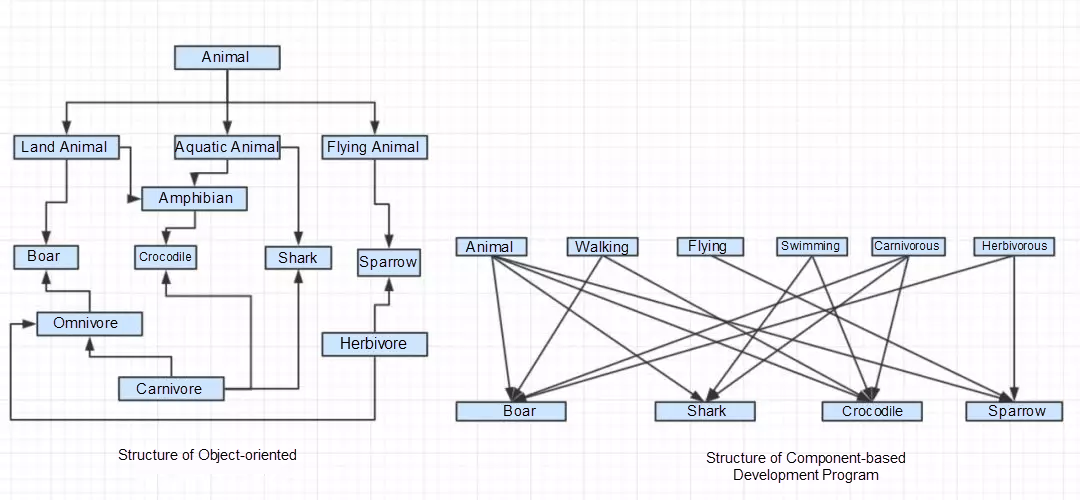
Comparison between OOP and CBD
You can see that, for 3D applications, CBD, which features a simple and clear structure, is more suitable for functionality extension than OOP. CBD also effectively avoids the code coupling caused by inheritance, making it ideal for visual development.
3. Mobile-friendly. As a lightweight engine, Oasis 3D enables on-demand loading and can load content for display even when the network connectivity of mobile devices is limited. Oasis 3D is also optimized for mobile browsers, providing some best practices.
After supporting services of Ant Financial at a massive scale, Oasis 3D is now compatible with thousands of mobile devices, being stable and reliable.
To sum up, Oasis 3D adopts several of the modes and concepts from the original web-based 3D engine, while also making several adjustments for the mobile environment, and therefore it has several advantageous over other engines on the market.
Ant Financial has been exploring the implementation of 3D projects for years. Oasis 3D has been applied in several projects for continuous iteration and optimization with excellent results, allowing us to set up an efficient 3D workflow.
When Oasis 3D was first released in 2017, at which time it was entrusted to support several projects in succession, including Ant Farm's built-in game "star ball", which had particle array special effects for the second anniversary of MYbank, and also Ant Credit Pay's Double 11 special effects, and whale special effects for Ant Cash Now.

Ant Farm's star ball game
In 2018, the focus of Oasis 3D was to optimize APIs, release new versions, launch the official website, and promote it within Alibaba Group. During that period, we also explored the implementation of mobile projects, such as Bonus Planet and Ant Farm's chicken hill climbing game, which were designed in the mobile-friendly low poly style. We used a large number of baked textures to replace complex lighting and shadows. This greatly optimized the visual effects and performance, and dramatically improved the user's overall experience.
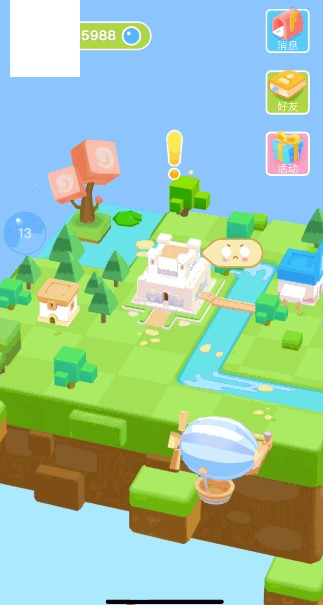
Bonus Planet
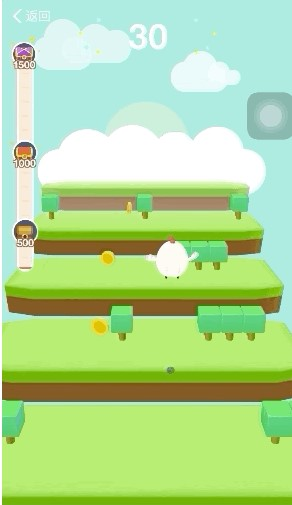
Ant Farm's chicken hill climbing game
We also tried our hand at the big screen visualization project and successfully undertook the task of supporting the business big screen.

Alipay big screen
Although Oasis 3D has made major contributions to the launch of 3D projects, its development has not been easy. In fact, it helped expose a series of problems in web-based 3D project creation:
These challenges can hamper the implementation of web-based 3D projects, making it difficult to promote and reuse this technology in the Ant Financial unit.
For the solution, we must not only solve the problems at the engine level, but also simplify the implementation of web-based 3D projects and its accessibility to more users. This forces us to simultaneously work on three aspects: engine functionality, tools and workflow, and platform ecosystem.
Therefore, we develop Oasis Editor, a 3D content editor based on Oasis 3D.
Oasis Editor is an online editor that redefines the workflow of 3D projects. With the workflow provided by Oasis Editor, you can visually edit 3D environments and interaction logic. Functions such as scene setup, scene beautification, animation editing, and game logic editing can all be completed online.
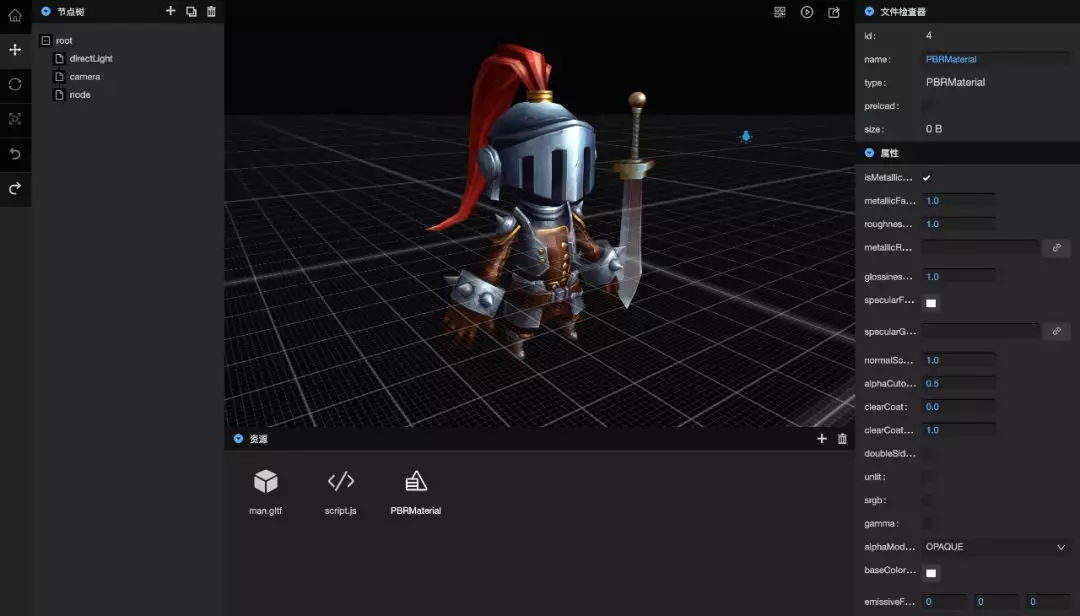
Oasis Editor
Oasis Editor has the following advantages:
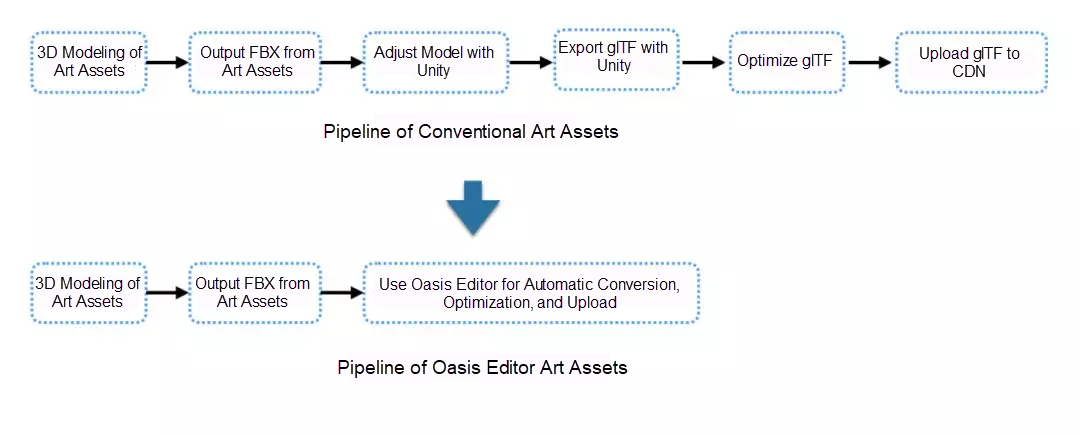
Comparison of different art assets pipelines
In addition, we tried to cover all aspects of 3D development with Oasis Editor. For example, in computer graphics technology, the most specialized part is the use of various graphics algorithms and programmable shader interfaces to implement various special effects and simulation effects. It is very difficult to involve application developers in this part. However, many professional shaders can be involved in multiple places, and the visual shader editor and the shader content management platform are also very important. In the future, we plan to integrate these functions with Oasis Editor engineering so that we can not only demonstrate the effects of our supported shaders in a holistic way, but also reduce a lot of the workload of custom development.
In general, we hope to use Oasis Editor to simplify the 3D development process, making developers transparent to the Oasis 3D engine. In this way, they can develop the entire project simply by going through the Oasis workflow, and can enjoy the ease of 3D development.
To achieve better versatility, browsers provide users with the most basic rendering interfaces. With them, users can freely control the display of each source point on the canvas. However, with freedom also comes problems. Your imagination and graphics knowledge system determine what you can render, and most people don't have such wild imaginations. As a result, it can be extremely hard to implement web-based 3D projects. It's sort of like trying to build skyscraper with only some gravel.
Like building a skyscraper, web-based 3D engineering needs to consider more advanced issues. The Oasis system undertakes the underlying professional tasks and provides users with efficient and easy-to-use tools and a rich platform.
We have been working hard on building the Oasis system, which will soon be available to users in China to serve all web-based 3D project developers. So, stay tuned.
Alibaba Clouder - August 22, 2019
Alipay Technology - November 26, 2019
Alibaba F(x) Team - June 20, 2022
Alibaba Clouder - April 29, 2020
Alibaba Clouder - October 16, 2020
Alibaba Container Service - July 28, 2021
 Black Friday Cloud Services Sale
Black Friday Cloud Services Sale
Get started on cloud with $1. Start your cloud innovation journey here and now.
Learn More Financial Services Solutions
Financial Services Solutions
Alibaba Cloud equips financial services providers with professional solutions with high scalability and high availability features.
Learn More Quick BI
Quick BI
A new generation of business Intelligence services on the cloud
Learn More